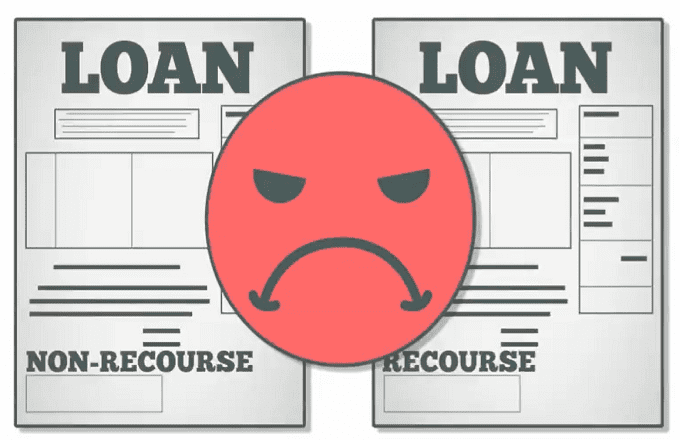Overview
Recourse and non recourse loan allow lenders to lay claim to assets if borrowers default on their obligations and fail to repay their debts. Lenders are allowed to take possession of any assets used as collateral to secure these loans. Many loans are taken out with one or more assets of a certain value that the lender can take if the borrower does not fulfill their obligation as outlined in the loan agreement.1
The primary difference between the two is that a recourse loan favors the lender, while a non recourse loan benefits the borrower. So the distinction between recourse loans and non recourse loans comes into play if money is still owed on the debt after the collateral is sold. Recourse loans allow lenders to go after other assets owned by the borrower if there’s still a balance remaining after the collateral is collected. Lenders of non-recourse loans, on the other hand, are prohibited from going after a borrower’s other assets even if there’s an outstanding balance after the collateral is sold.1
KEY TAKEAWAYS
- Both recourse and non-recourse loans allow lenders to seize collateralized assets after a borrower fails to repay a loan.
- After collateral is collected, lenders of recourse loans may still go after a borrower’s other assets if they have not recouped all of their money.
- With a non-recourse loan, lenders can collect the collateral, but may not go after the borrower’s other assets.
Recourse Loans
Recourse loans are secured by collateral. If the borrower fails to live up to their obligation and default on the payment schedule, the lender can go after the borrower’s other assets or sue to have his or her wages garnished—anything so that the loan can be made whole again.
Recourse loans give lenders a higher degree of power because they have fewer limits on what assets lenders can claim against for loan repayment. From the lender’s point of view, a recourse loan reduces the perceived risk associated with less creditworthy borrowers.
Because lenders can reduce the risk associated with these loans, they’re able to charge a lower interest rate, making them more attractive to borrowers—especially those who have poor or no credit. This kind of loan becomes even more attractive when a borrower can’t get financing from any other source.
Because lenders can mitigate risk with recourse loans, they can charge lower interest rates.
These loans are fairly common when banks and other financial institutions begin to tighten up lending. When the economy becomes uncertain, credit markets become tighter, leading lenders to ease up on how much they’ll lend to borrowers. And because credit is harder to come by during these times, borrowers are usually more willing to restrictive terms including giving up access to their assets.
Example of a Recourse Loan
Most automobile loans are recourse loans. If the borrower defaults, the lender can repossess the car and sell it at full market value. This amount is much lower than the value of the loan because vehicles depreciate significantly after it’s driven off the lot. Because there’s usually a balance left on the loan, the lender can go after the borrower to recoup whatever is left owing on the loan.
Non Recourse Loan
In a non recourse loan, the lender is out of luck. If there’s a balance due after selling the asset collateralize with the loan, the lender has to take the loss. This means they have no claim on the borrower’s other funds, possessions, or funding sources.
Not surprisingly, as a matter of principle, borrowers almost always favor non-recourse loans, while lenders almost always favor recourse loans. While potential borrowers may find it attractive to hold out for non-recourse loans, they normally come with higher interest rates and are reserved for individuals and businesses who have stellar credit histories.
Additionally, failure to pay off a non-recourse debt may leave a borrower’s other assets untouched, but the default is still on record, with all that implies for the borrower’s credit score—which is not a positive one.
Example of Non Recourse Loan
Many traditional mortgages are non-recourse loans. They can only use the home itself as collateral. This means if the borrower defaults on their mortgage loan, the bank can foreclose on the home, take possession, and sell it to satisfy the loan. But the lender cannot go after any remaining balance on the mortgage and must thus take it as a loss.

